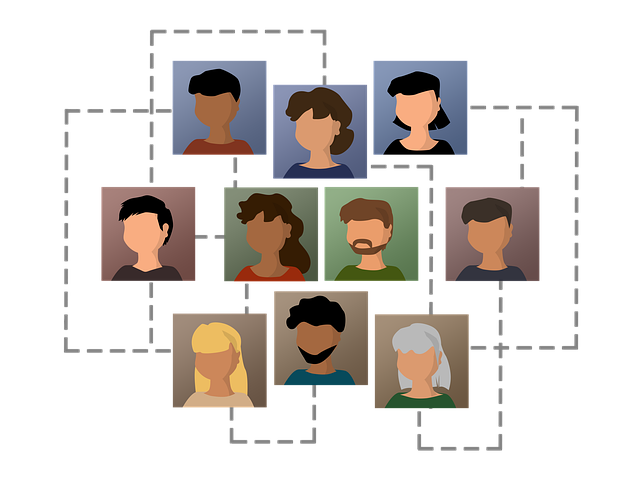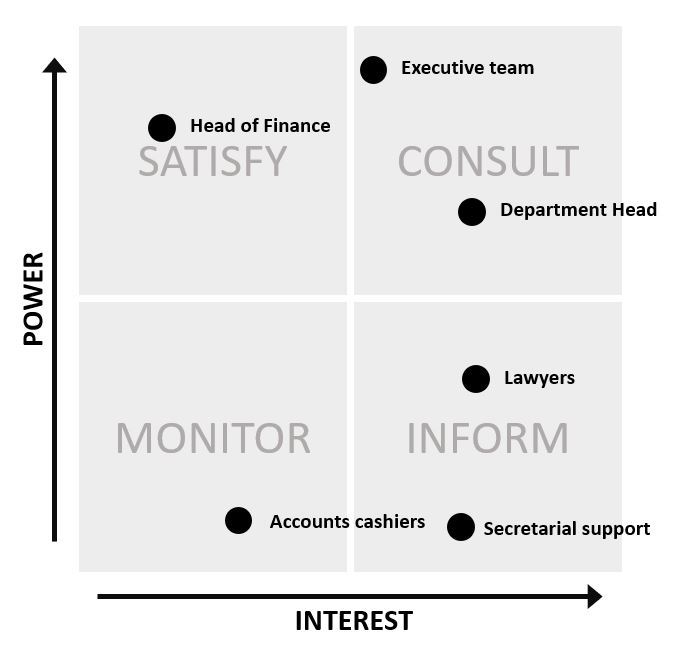Stakeholder analysis is a core group of tools in a business analyst’s kit. Applying this toolset effectively can make the difference between success and failure for a project or change programme. In this article, I look at ways of applying stakeholder analysis methodically, with a particular focus on identifying and addressing competing stakeholder viewpoints and needs.
Back in September 2020, I wrote a blog post on identifying waste in a professional services organisation. Here I touched in passing on the subject of competing stakeholder interests – a challenge which (if not resolved) can threaten the success of any attempt to change how things are done. I talked about how the goals and motivations of different groups within a law firm may conflict with each other and with the intent of a project. In that article, I went on to say that BAs come armed with tools and techniques that can help draw out these different perspectives and inform strategies to address conflicts and challenges – so this article attempts to outline a useful approach and some of the tools we can use.

Some stakeholders may be desperate for a change to come about. Others may have a real interest in maintaining the status quo. Many will have some surprising (and often quite specific) wants and needs from the situation.
Business analysts play a pivotal role in navigating a change initiative through the rocky waters of these different perspectives. Through investigation and exploration, and the application of analysis techniques, they help guide the organisation to successful outcomes.
In order to achieve this, a business analyst needs to conduct a series of stakeholder analysis activities:
- Identify the stakeholders and understand their perspectives
- Analyse these perspectives further to identify alignment and potential conflicts
- Formulate a plan to work with stakeholders and address gaps and challenges
Investigate perspectives
You need information, so you’ll need to do some investigation. This can include conversations, reviewing written sources or data, and deploying formal analysis tools:
First and foremost, get out there and talk to people! For starters, you need their knowledge, insights, and opinions. You also want to foster trusting relationships; demonstrating that you listen, understand, and proceed with respectful regard to what you’ve been told is essential to doing this. Using a Stakeholder Wheel provides a simple way to ensure you’re thinking about relevant stakeholder groups such as owners, managers, employees, and customers. Of course in some organisations (such as law firms) the lines between these roles may blur a little!

Establish stakeholder motivations. See what you can discover about targets, objectives, performance measures, reports, or authorisation / approval steps. These have often developed organically – and in siloes – and can pull in competing directions. While an individual lawyer may have a target for charging a number of billable hours each day, the partner that owns the client relationship may be trying to sooth concerns about costs and value for money. Ask your stakeholders what they think other people or groups are trying to achieve or hoping for – they may not be right, but the answers are often revealing!
Look for evidence of the organisation’s culture. Explore statements of cultural intent and look for evidence about what really happens. Establish what’s encouraged or rewarded, what’s ignored or tolerated, and what’s discouraged or punished. Compare what’s said to what really happens. In many law firms, you will hear grand statements about work-life balance, but if lawyers are typically working late into the evening, then other motivators could be at play. Identifying these mismatches can be crucial in avoiding incorrect assumptions about what will work or be accepted.
Look at formal structures – establish how decisions are made, and by whom. Does the organisation have a clear “command and control” structure, or is power distributed? Understanding this will help you determine appropriate actions to resolve conflicts in perspectives and needs. It may also help reveal insights about the behaviours of different stakeholder groups.
Conduct Social Network Analysis. Identifying how your stakeholders are connected to each other can be illuminating. As well as opening up further introductions to new stakeholders, you also build a picture of the flow of information and where expertise and interest resides.

Use Value Proposition Analysis to explore how features of the service or product address the client’s needs, pain points, and gains sought. This technique provides two types of insight. Firstly, you’ll get a much clearer idea of the value the service needs to be providing (which will help you in defining processes or technology requirements). Secondly, as you work with stakeholders to explore this you’ll hear their own perspectives about what’s important, see what grabs their attention, and get a feel for where disagreements may lie.
Apply some Change Impact Analysis to understand the likely impacts of a change on individuals or roles. I like to consider Stop-Start-Continue. This technique looks at the practical “doing” changes. What will each role need to start doing once this change is implemented? What will they no longer do? What things carry on as normal? Combining this information with what you’ve learned about people’s motivations and beliefs can help you establish likely reactions – support or antagonism!
Analyse to reveal richer insights
These different stakeholder perspectives can have profound impacts on the scope or nature of a change initiative, and on its successful delivery. It’s important to take time analysing what you’ve learned to establish these potential impacts. There are a number of possible stakeholder analysis techniques you could deploy:
CATWOE (a technique from Soft Systems Methodology) articulates stakeholder perspectives in a structured way. For each stakeholder, we create a statement encapsulating their view on the core process that delivers value to the customer, who owns this process, and their surrounding context created by their worldview and environmental factors. The exercise is useful both for drawing out individual perspectives, but also for providing a formalised way of comparing stakeholders’ outlooks.
Every BA loves assembling a Power/Interest grid! This is a really common tool for comparing stakeholders in terms of their ability to influence or direct a change, as well as in their “skin in the game”. The tool helps start to bridge the gap between understanding stakeholder perspectives and working out what to do with that information. Depending on where each stakeholder or group lies, it suggests the extent to which you need to actively engage and manage understanding and expectations as the project progresses.

Forcefield Analysis examines the factors working in favour of – or against – a goal or outcome. Incorporating stakeholder perspectives ensures you consider how these differing beliefs, opinions, or needs are likely to support or hinder the change initiative. Whose life will be easier for this change? Does this change threaten someone’s annual bonus? Are a team’s jobs at risk? Applying this technique will help you think about what you can do to make best use of your support or to address concerns, challenges, and blockers.
See/Feel/Do – consider groups or individual stakeholders, and try to determine the nature of their engagement with the change. What will they see or be told? What are they likely to think or understand about this? What are they likely to actually do? You’re bound to make assumptions as your think about this, so challenge yourself and look for evidence or validation.
Creating example Personas can be a great way to ensure all stakeholder perspectives are considered throughout a project. This technique provides a handy way to test ideas, compare the likely experience of different groups, and ensure specific wants and needs aren’t forgotten.
Apply your stakeholder analysis insights
Use what you’ve learned from examining stakeholder perspectives in your subsequent activities and further analysis. The insights gained could feed into SWOT or PESTLE analysis, or suggest specific activities and communication approaches to engage particular groups, roles, or individuals.
If you’ve identified potential challenges or blockers (e.g. through forcefield analysis), consider what you know about the decision-making or power structures in the organisation. Can someone in a leadership position help calm tensions? Does there need to be a rethink or reframing of competing objectives? Think about when you need a consensus or when you need a top-down decision to resolve a conflict. Think about whether persuasion and negotiation or other approaches might be most useful in your situation.
Work with others – change sponsors, project managers, product owners, business leaders – to establish the best way forward and shape appropriate actions. A business analyst is often not empowered to make decisions for others, or to dictate what must happen. Instead, BAs need to make use of their understanding of how the organisation works in order to achieve the best outcomes.
Stakeholders are often under various shades of misapprehension about what other groups want or need – a BA is well-placed to highlight mismatches, helping stakeholders to realise, engage with, and understand others’ perspectives. Applying facilitation techniques such as visual thinking can help build common understanding and consensus; stakeholders with disagreements will often find a path to resolution themselves once they understand each other! Make sure you consider power differentials along the way. Tackling the “HiPPO” (the Highest-Paid-Person’s-Opinion) in a workshop or meeting can be really important in ensuring all voices and opinions get heard.
Note that stakeholder analysis is not a “once-and-done” activity. Over the course of any change initiative, you’ll continually learn new information about what your stakeholders believe or want, so you will need to keep re-visiting assumptions and decisions to adjust your approach. Through continued consideration of stakeholder perspectives, you can keep your change on course for success.
A great tool – and one I’ve drawn on in selecting techniques to include in this article – is ‘Business Analysis Techniques: 123 essential tools for success‘ (Cadle, Paul, Turner, 2021). It’s chock-full of ideas for tools BAs can apply in stakeholder analysis and every other aspect of business analysis!